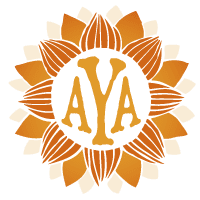ASHTANGA YOGA AUSTIN
Around two thousand years ago, a sage by the name of Patanjali composed the Yoga Sutras, a collection of 196 aphorisms on yoga. It is one of the most important classical treatises on yoga philosophy and practice. In Chapter 2 of the Yoga Sutras, Patanjali prescribes adherence to an eight-fold path of yoga, otherwise known as “Ashtanga Yoga” (“ashta” meaning “eight”, “anga” meaning “limb” in Sanskrit).
These eight steps of yoga include:
- yama—moral codes or restraints, regulating how we behave with others
- niyama—observances or commitments, particularly to ourselves, to be followed in our daily life
- asana― the physical postures of yoga
- pranayama―control of the breath, or “prana”, the vital life force
- pratyahara―withdrawal of the senses, drawing oneself inward and remaining unaffected by the external world or impressions of the mind
- dharana―concentration, holding steady focus
- dhyana―meditation, a prolonged and uninterrupted state of one-pointed concentration
- samadhi―complete absorption and realization of higher consciousness
Yama and niyama are the ethical practices that help one develop a yogic lifestyle.
The five yamas consist of:
- ahimsa―non-violence, in our words, thoughts and actions
- satya—truthfulness, towards others and ourselves, in our words and actions
- asteya―non-theft, not stealing property that belongs to others, or acquiring property that does not rightfully belong to us, both tangible and intangible
- brahmacharya―preservation of sexual energy, respecting the fidelity of relationships
- aparigraha―non-grasping, non-hoarding of things and ideas, to be without greed
The five niyamas consist of:
- saucha―cleanliness, both internal and external, keeping the mind and the body pure
- santosha―contentment, being happy with whatever we have, maintaining equanimity
- tapas―self-discipline, austerity, the heat that is generated by practice, the burning off of impurities
- svadhyaya―self-study, going deeper into practice through self-inquiry and continued study of yogic scriptures and teachings
- Ishvara pranidhana―devotion or surrender to a higher power (i.e., God)
The first steps we must practice are the four externally oriented limbs: yama, niyama, asana, pranayama. Learning to control our behavior through yama and niyama, our body through asana, and our breath through pranayama, we build a strong foundation for practice of the remaining four limbs. As we become grounded in the external limbs, the inner limbs (“antaranga“) of pratyahara, dharana, dhyana and samadhi may be cultivated, leading us to self-realization and understanding the true nature of the soul.
By integrating these principles of yoga into our daily living, we begin to see yoga as much more than just a physical practice; we begin to see yoga as a way of life. In the modern world, we are often so rushed that we want to bypass the philosophical aspects of yoga and get on with practice of the third limb (asana). However, by embracing the spiritual realm of yoga, by immersing ourselves in the practice of all eight limbs, we can gain an understanding of the true wisdom that this ancient tradition has to offer.

